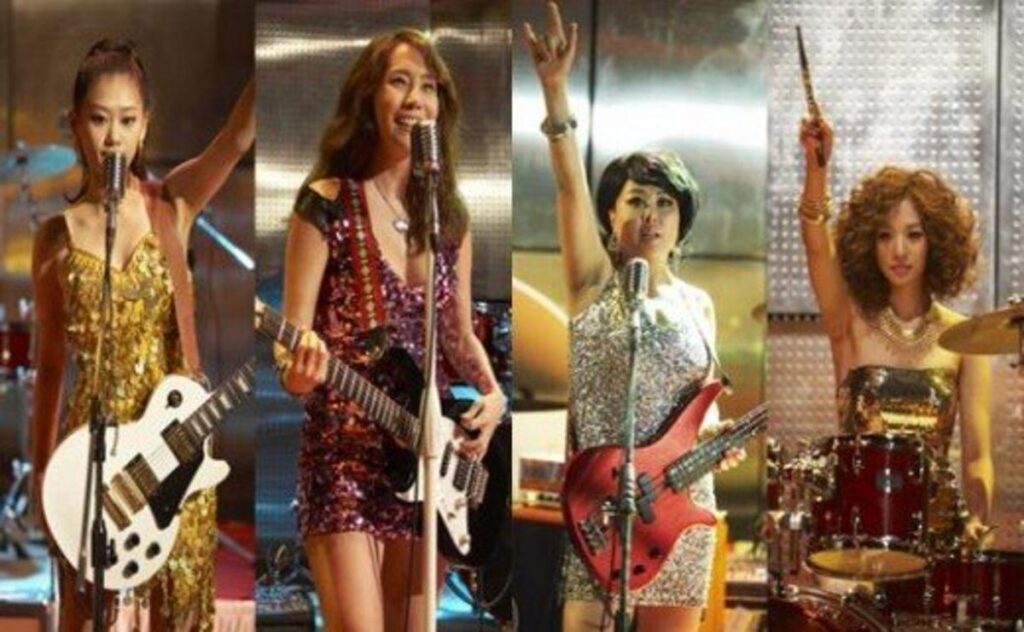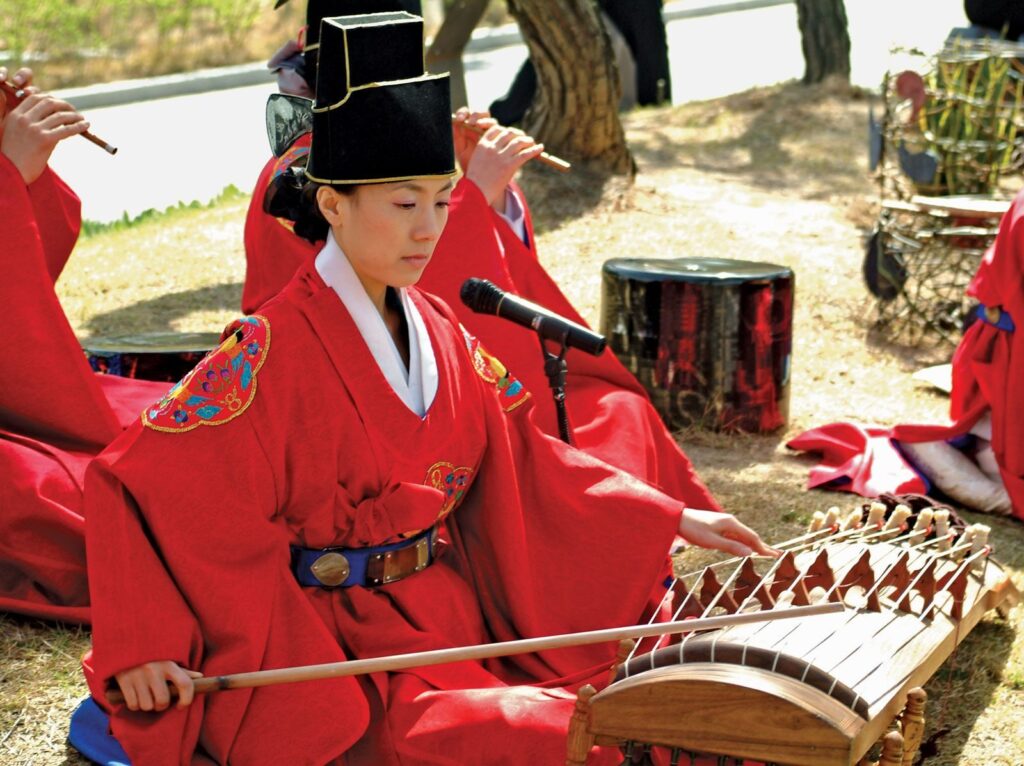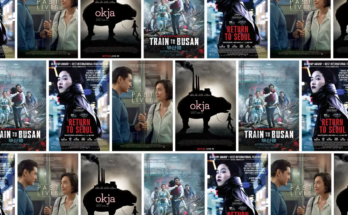
Music and film are two powerful art forms that, when combined, create an immersive and emotional experience for audiences. In Korean cinema, music plays a crucial role in shaping narratives, conveying emotions, and enhancing the overall cinematic experience. From heart-wrenching dramas to thrilling action films, the use of music in Korean cinema is both innovative and deeply impactful. Let’s explore how music influences Korean films and the unique ways in which it contributes to their storytelling.
The Evolution of Music in Korean Cinema
Early Beginnings
The history of music in Korean cinema dates back to the early 20th century, during the silent film era. Live musicians would perform alongside the film to provide auditory context and enhance the visual storytelling. This tradition laid the foundation for the integration of music in Korean films.
The Golden Age of Korean Cinema
The 1960s and 1970s marked the Golden Age of Korean cinema, with a surge in musical films and melodramas. Music became an integral part of the film industry, with composers creating memorable scores that resonated with audiences. The iconic film “Chunhyang” (1961) is a prime example of how music was used to enhance the emotional depth of the story.
The Symbiotic Relationship Between Music and Narrative
Setting the Tone
Music in Korean cinema is often used to set the tone of a film. Whether it’s a suspenseful thriller or a romantic drama, the score establishes the mood and prepares the audience for the unfolding narrative. For instance, the haunting music in “Oldboy” (2003) amplifies the film’s dark and intense atmosphere.
Conveying Emotions
One of the most powerful functions of music in Korean films is its ability to convey emotions. A well-composed score can evoke feelings of joy, sadness, fear, or nostalgia, enhancing the emotional impact of a scene. The poignant soundtrack of “A Moment to Remember” (2004) beautifully captures the heartbreaking love story.
Enhancing Character Development
Music also plays a significant role in character development. The use of leitmotifs—recurring musical themes associated with specific characters—helps to underscore their personalities and emotional journeys. In the film “My Sassy Girl” (2001), the playful and whimsical score reflects the quirky nature of the female protagonist.
The Role of Popular Music in Korean Cinema

K-Pop and Film Collaborations
The global phenomenon of K-pop has had a significant influence on Korean cinema. Many films feature popular K-pop songs or collaborate with famous K-pop artists to create original soundtracks. This fusion of pop culture and cinema attracts a wider audience and adds a contemporary flair to the films. The movie “The King of Jokgu” (2014) features a soundtrack that includes popular K-pop tracks, enhancing its appeal to younger viewers.
Original Soundtracks (OSTs)
Original Soundtracks, or OSTs, are a staple in Korean cinema. These songs are specifically composed for the film and often become hits in their own right. An OST can evoke powerful emotions and leave a lasting impression on the audience. The OST for “Secret Garden” (2010) features songs that perfectly capture the magical and romantic essence of the drama.
Musical Films
Korean musical films, such as “Once Upon a Time in High School” (2004) and “The Phantom of the Opera” (2005), showcase the seamless integration of music and narrative. These films use musical performances to advance the plot and deepen the emotional connection with the audience.
The Impact of Traditional Korean Music

Incorporating Traditional Instruments
Many Korean films incorporate traditional Korean instruments, such as the gayageum (a zither-like string instrument) and the haegeum (a fiddle-like string instrument), to create a unique and culturally rich soundscape. The use of traditional music adds an authentic and immersive layer to the storytelling. In the historical drama “The Throne” (2015), traditional instruments are used to evoke the period setting and cultural context.
The Fusion of Traditional and Modern Music
The fusion of traditional and modern music is a common practice in Korean cinema. This blending of genres creates a dynamic and innovative sound that enhances the film’s narrative. The movie “The Admiral: Roaring Currents” (2014) seamlessly combines traditional Korean music with contemporary orchestral scores to create a powerful and epic soundtrack.
The Role of Music in Genre Films

Horror and Thrillers
In horror and thriller films, music is used to create tension and suspense. The use of dissonant chords, eerie soundscapes, and sudden musical cues can heighten the sense of fear and anticipation. The soundtrack of “The Wailing” (2016) masterfully uses music to build an atmosphere of dread and mystery.
Romance and Melodramas
Romantic films and melodramas often feature lush, emotive scores that underscore the emotional highs and lows of the characters. These soundtracks play a crucial role in evoking feelings of love, longing, and heartache. The music in “My Love from the Star” (2013) perfectly complements the film’s romantic and fantastical elements.
Action and Adventure
In action and adventure films, music is used to amplify the excitement and intensity of the scenes. High-energy scores with driving rhythms and bold melodies enhance the thrill of the action sequences. The soundtrack of “Train to Busan” (2016) adds to the adrenaline-pumping ride of the zombie apocalypse.
Iconic Composers in Korean Cinema
Jo Yeong-wook
Jo Yeong-wook is a renowned composer known for his work on films such as “Oldboy” (2003) and “The Handmaiden” (2016). His innovative and evocative scores have left a lasting impact on Korean cinema, elevating the films he works on to new artistic heights.
Lee Byung-hoon
Lee Byung-hoon is another influential composer whose work spans various genres. He is known for his ability to create memorable melodies that resonate with audiences. His scores for films like “The Host” (2006) and “Mother” (2009) showcase his versatility and talent.
Park Ki-young
Park Ki-young is celebrated for his contributions to historical dramas and period films. His use of traditional instruments and melodies adds authenticity and depth to the films’ soundscapes. His work on “The Throne” (2015) and “Masquerade” (2012) exemplifies his skill in blending traditional and modern music.
The Global Influence of Korean Film Music
International Collaborations
Korean cinema’s growing global presence has led to collaborations with international composers and musicians. These partnerships bring new perspectives and styles to Korean films, enriching the overall cinematic experience. The movie “Snowpiercer” (2013), directed by Bong Joon-ho, features a score by the acclaimed British composer Marco Beltrami.
Awards and Recognition
The exceptional quality of Korean film music has been recognized at international film festivals and award ceremonies. Composers like Jo Yeong-wook and Lee Byung-hoon have received accolades for their contributions to the industry, further cementing the global influence of Korean film music.
Cultural Exchange
The global popularity of Korean cinema has facilitated cultural exchange through music. Audiences worldwide are introduced to traditional Korean instruments, melodies, and musical styles, fostering a greater appreciation for Korean culture. The international success of films like “Parasite” (2019) has brought Korean film music to the forefront of global cinema.
The Future of Music in Korean Cinema
Technological Advancements
Advancements in technology continue to shape the future of music in Korean cinema. Digital audio workstations, virtual instruments, and innovative recording techniques enable composers to create complex and dynamic scores. The integration of immersive sound technologies, such as Dolby Atmos, enhances the auditory experience for audiences.
Emerging Composers
A new generation of composers is emerging in the Korean film industry, bringing fresh ideas and innovative approaches to film music. These talented individuals are pushing the boundaries of traditional film scoring and exploring new musical landscapes.
Continued Evolution
The role of music in Korean cinema will continue to evolve as filmmakers and composers experiment with different genres, styles, and techniques. The fusion of traditional and modern elements, along with collaborations with international artists, promises a vibrant and dynamic future for Korean film music.
READ ALSO:
- The Evolution of Korean Cinema Over the Decade
- The History of the Internet: From ARPANET to the World Wide Web
- Korean Celebrities Who Are Also Musicians
- Rising Korean Actors to Watch in 2025
Conclusion
Music is an essential and transformative element in Korean cinema, enriching narratives, conveying emotions, and creating unforgettable experiences for audiences. From traditional instruments to contemporary scores, the diverse and innovative use of music in Korean films highlights the creativity and artistry of the industry. As Korean cinema continues to captivate global audiences, the role of music will remain a vital and influential force in shaping its stories
FAQs
1. How does music enhance the storytelling in Korean cinema?
Music sets the tone, conveys emotions, and enhances character development, creating a more immersive and emotional experience for the audience.
2. What is the significance of Original Soundtracks (OSTs) in Korean films?
Composers specifically create OSTs for films, and they often become hits, evoking powerful emotions and leaving a lasting impression on the audience.
3. How do traditional Korean instruments contribute to film music?
Traditional instruments add authenticity and cultural richness to the film’s soundscape, enhancing the storytelling and period setting.
4. Who are some iconic composers in Korean cinema?
Jo Yeong-wook, Lee Byung-hoon, and Park Ki-young create innovative and evocative scores in Korean films, earning them renown as composers.
5. What is the future of music in Korean cinema?
The future of music in Korean cinema includes technological advancements


